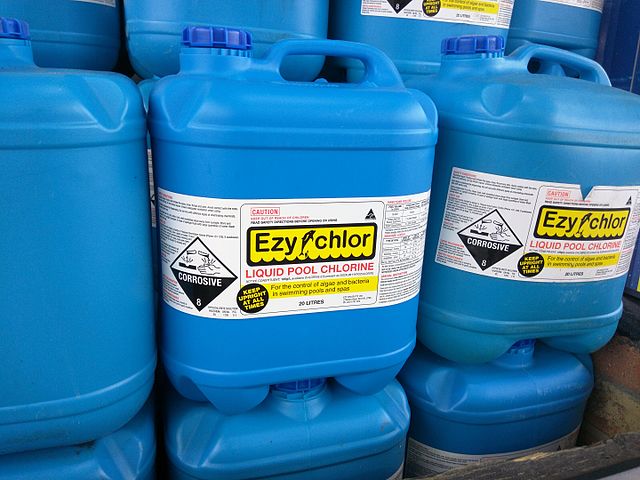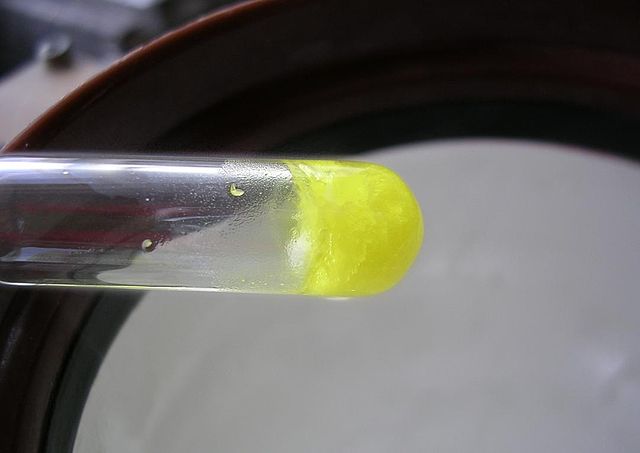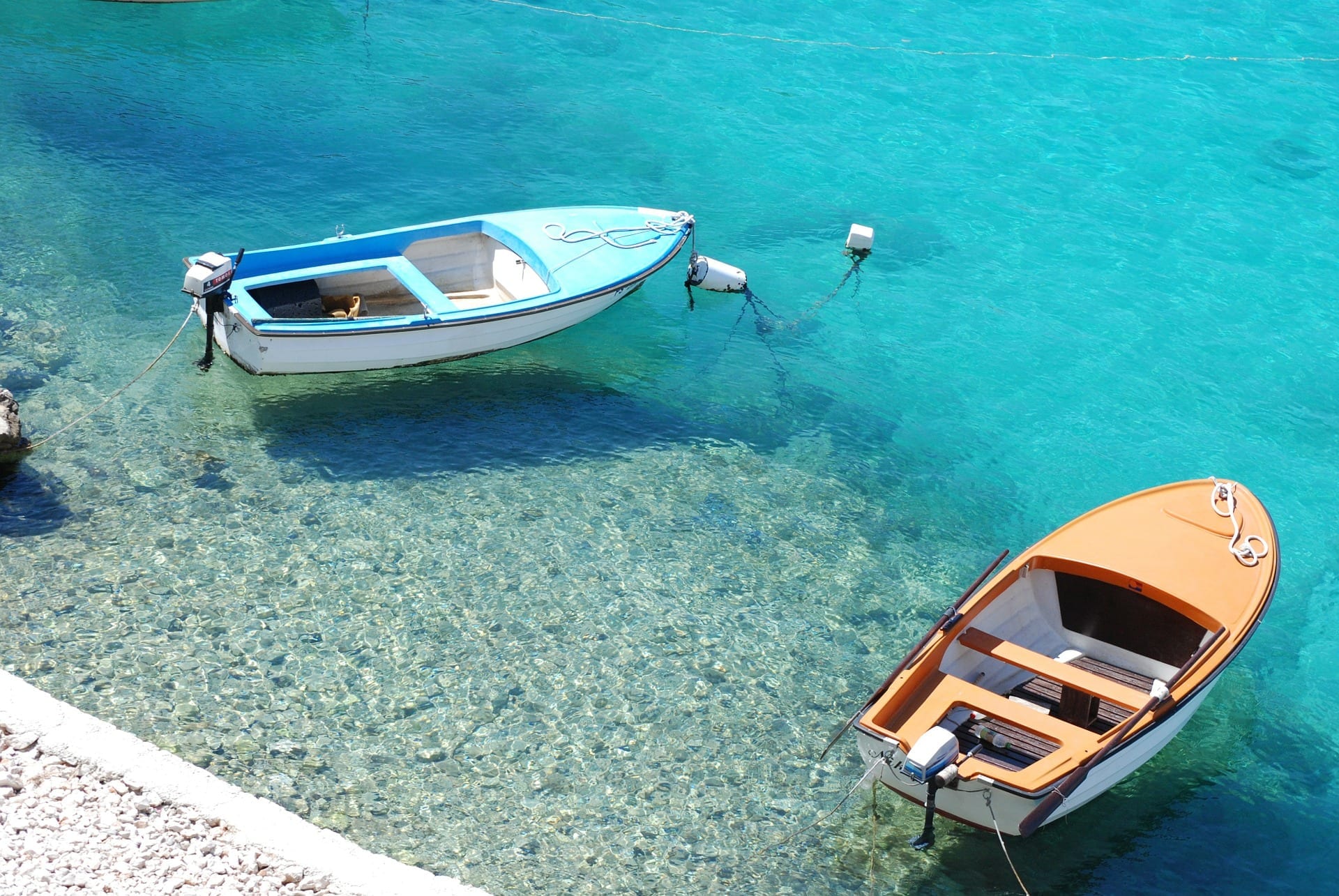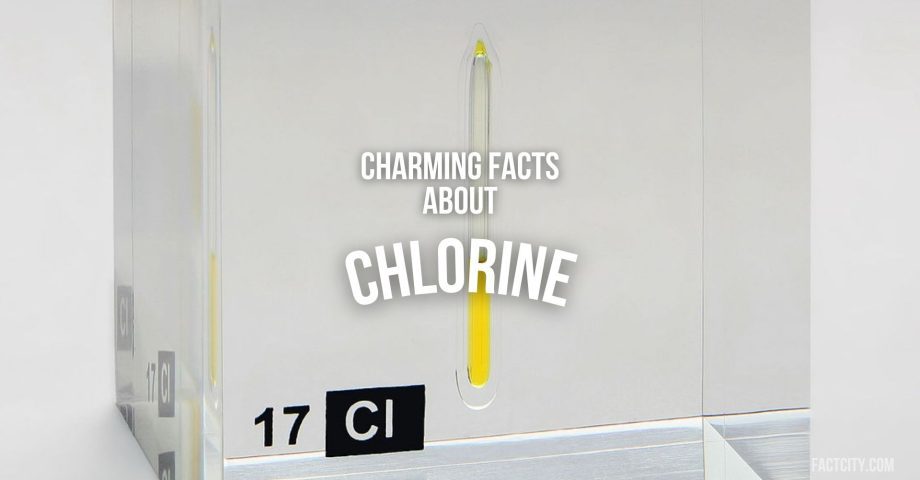Chlorine is an element that many of us have come across in our time – if you go swimming in local pools a lot, you will likely come across this strong-smelling chemical. It’s great for disinfection, but not so great on the nose – but what else is there to know about this periodic marvel? Let’s take a look at some fun facts about chlorine to help take you back to science class.
1. You’ll find chlorine as “Cl” on the periodic table.
As mentioned above, chlorine is what’s known as a chemical element. It is represented by the symbol Cl and the atomic number 17 on the periodic table, meaning you’ll have to go searching for it!
2. Chlorine is one of several gas elements.
At normal room temperature and pressure, chlorine is actually a pale yellow-green gas! It has a distinct, pungent odour. You’ve no doubt smelt it before completely by accident.
3. Chlorine is widely distributed across nature as well as being prominent in artificial compounds.
Believe it or not, chlorine is actually pretty abundant in nature and can be found in various compounds. For example, it’s visible in sodium chloride (table salt) and in minerals like halite.

4. It was first discovered in water.
Chlorine was first discovered in 1774 by Carl Wilhelm Scheele. He managed to isolate it from the chemical compound known as hydrochloric acid. That, as it sounds, is otherwise pretty corrosive!
5. Chlorine is commonly used as bleach.
Chlorine is a common bleaching agent for a variety of different purposes! You can see it used in paper, textiles, and in the production of many household cleaning products.
6. Chlorine typically finds its way back to water.
As mentioned above, we all know that chlorine is commonly used in swimming pools to disinfect them. However, it is also used in drinking water for the same reason. This is thanks to chlorine’s ability to kill harmful microorganisms, such as bacteria and viruses. Don’t worry – the water you get out of your faucet is usually safe to drink!
7. However, chlorine is fairly toxic.
Although we commonly use chlorine in our everyday lives, it can actually be very toxic. In its pure gaseous form, chlorine can potentially kill if inhaled In fact, it is so strong it was used as a chemical weapon during World War I.
8. It’s not the chlorine that makes the smell!
Although we tend to all think we know the smell of chlorine well from places such as swimming pools, it’s not, in fact, the chlorine that we’re smelling. In fact, it’s the chlorine reacting with organic matter like sweat and urine that makes the distinctive smell.
9. It is used in PVC.
Chlorine is also a key component of polyvinyl chloride (PVC), a versatile plastic used in a wide range of products, including pipes, cables, and vinyl records.

10. Chlorine played a key role in the depletion of the Ozone layer.
Chlorine, or rather chlorine compounds known as chlorofluorocarbons (CFCs) helped to deplete the vital ozone layer in the upper atmosphere. This led to the phasing out of CFCs in the late 20th century.
11. We all need chlorine in our diets, too.
As dangerous as chlorine gas can be, chlorine compounds are essential for human health. Chloride ions are important for proper nerve function and digestion.
12. You can find chlorine in natural waters.
It’s not just swimming pools that have chlorine in their waters. Chlorine is commonly found in nature in the form of chloride ions (Cl-) in various minerals, in seawater, and in underground brine pools.

FAQs about Chlorine
How harmful is chlorine to humans?
In certain cases, exposure to even low levels of chlorine can cause irritations in the eyes, nose, and throat. Exposure to higher levels can cause more damage, inducing breathing difficulties and causing damage to the lungs. That is why it is best to leave the use of chlorine to the professionals!
What is chlorine used for?
As mentioned above, chlorine is used for many reasons. However, it is primarily used to disinfect water from swimming pools to sewage water.
Is chlorine the same as bleach?
Bleach is technically chlorine. However, general house-cleaning bleach is not made with the same levels of chlorine as that used in pool-used chlorine.
Further reading
https://facts.uk/tag/Science/
https://www.rsc.org/periodic-table/element/17/chlorine
https://pubsapp.acs.org/cen/80th/print/chlorine.html
Do you know any interesting facts about Chlorine? Share them in the comments below!









